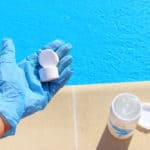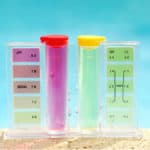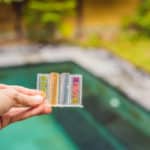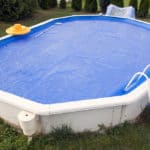You know that strong smell of chlorine when you’re near or in a swimming pool? Well, that is not there for the sake of it.
Chlorine is used in swimming pools to sanitize and kill germs so that the risk of waterborne illnesses is decreased or prevented.
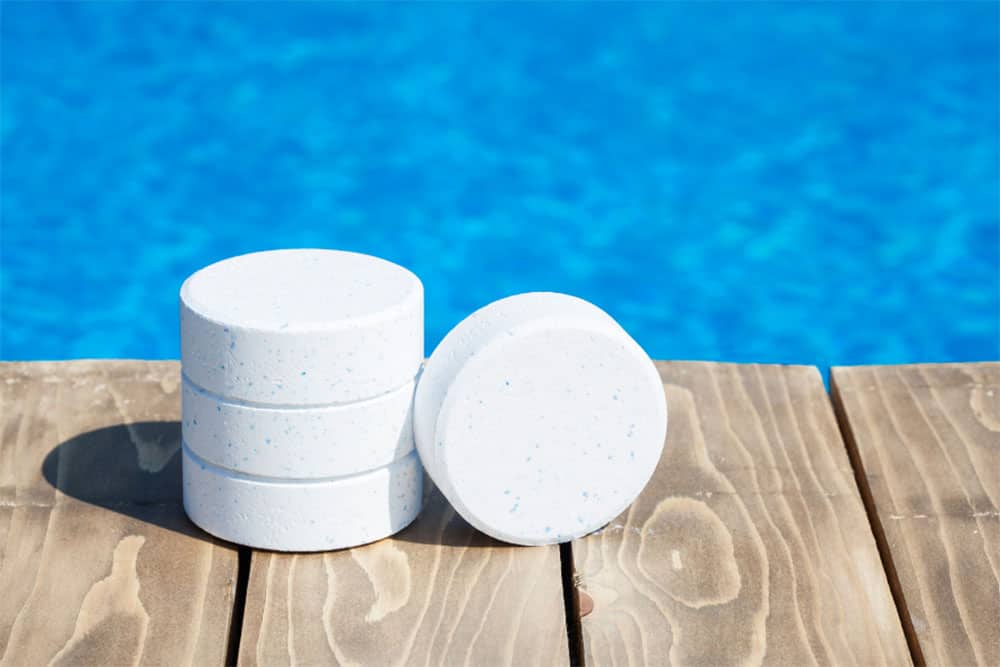
While there are a few options when cleaning swimming pools, chlorine tablets are one of the most popular methods. These are one of the best ways to maintain chlorine levels throughout the whole pool season.
And they are so easy to use! You just simply place the tablets in a floating dispenser or an automatic chlorinator and wait for them to dispense the chlorine around the pool.
After a short time, your pool’s water will be clean and thoroughly sanitized.
Before you begin using these tablets, you must determine how many your pool needs. In general, most pools require these tablets on a weekly basis but this is based on the pool’s water capacity.
In short, for every 5,000 gallons of water in a pool, it will require 1 chlorine tablet. If your pool is more or less, simply round up to the nearest 5,000 gallons.
For instance, if your pool is quite small and only holds 8,000 gallons of water, you need to add the appropriate amount of chlorine for a 10,000-gallon pool.
To help you understand this more thoroughly, we have an in-depth guide on how many chlorine tablets your pool will need and how often you should place them in your pool.
Continue reading so your pool will remain healthy and clean forevermore.
How often to place chlorine tablets in a pool
Usually, you only need to add chlorine tablets to your pool once a week. We highly recommend doing this on a day when you can perform weekly maintenance checks on the whole pool.
This is so you replenish the chlorine tablets on a regular and scheduled basis. Such a routine will be easier to follow and keep your pool cleaner for longer.
How many tablets you add to your pool completely depends on its size and how much water it holds. As we stated above, for every 5,000 gallons of water in a swimming pool, only 1 tablet will be required.
Therefore, a 16,000-gallon pool will need 4 tablets once a week. Every time you add these tablets, it is a great time to clean your pool’s skimmer and pump skimmer basket too.
You can also check whether the filters need cleaning or if you need to backwash your pool. It’s best to do this all on one day of the week, every week so you keep on top of your pool’s maintenance.
Remember to test the water every week too to ensure it is still clean and safe to swim in.
Check how much chlorine is left in your pool at this time as well. If the total amount is equal to just 1 tablet, you can count that tablet.
In other words, if you add 4 tablets a week, you should only add 3 to bring the total back up to 4 so your chlorine lasts longer.
When the cooler months settle in, you may find that the chlorine levels only decrease a little. But during the warmer months, chlorine will be dissolved much quicker.
Pool capacity
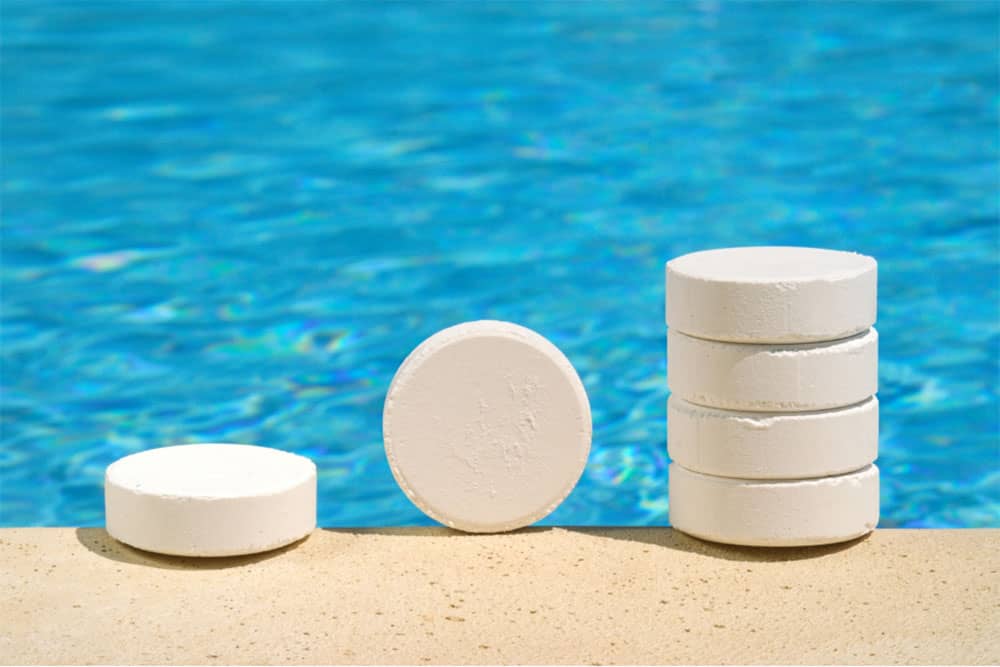
Here is how many 3-inch chlorine tablets you should add to your pool per week depending on the pool’s water capacity.
- 5,000 gallons - Add 1 chlorine tablet per week
- 10,000 gallons - Add 2 chlorine tablets per week
- 15,000 gallons - Add 3 chlorine tablets per week
- 20,000 gallons - Add 4 chlorine tablets per week
- 25,000 gallons - Add 5 chlorine tablets per week
Where to place the chlorine tablets
There are different ways of adding chlorine tablets to your pool. Firstly, you should not place them directly under the skimmer as this will simply trap the tablet rendering it useless.
Let’s take a look at some of the methods of adding these tablets to pools.
A Chlorine floater dispenser
This is probably the easiest and least expensive way to disperse chlorine through your pool gradually. You just place the chlorine pucks into a floater and allow them to float along the water’s surface.
An automatic chlorinator
This is a more advanced option. These tend to require some installation into your pool’s pipelines and are a little more expensive.
Inline chlorinator
These are installed into the permanent pipe or hose after the filter and pool pump that lead the jet returns water to your pool.
These also require fitting to the pipelines and are generally the best option if your pool’s pump and filter plumbing have not been completed yet.
An offline chlorinator
If your plumbing is all installed and set up but you haven’t added a chlorinator to your pool yet, an offline type may be the best option.
You just need to attach the lines of an automatic chlorinator to the pipe that runs water to your pool.
This can be done by drilling a small hole into the PVC pipes and then adding the line. To be on the safe side, always check your manual’s installation guide for the exact drill bit sizes.
Chlorine tablets vs Chlorine granules
Many pool owners believe that chlorine tablets and chlorine granules work well together. However, most tend to use granules at the beginning of the cleaning process to remove bacteria and algae.
This is because they usually remove these at a much quicker rate. If you haven’t treated your pool for a week or two, granules will get things done much quicker every time.
That being said, chlorine tablets are very effective when used on a regular basis, once a week.
But, if you have a pool that is under regular rainfall, sunshine, or experiences frequent debris, chlorine granules are usually preferred.
In Summary
Choose one day every week and place the necessary number of chlorine tablets in your pool to keep it clean.
Check your pool’s water capacity to figure out how many tablets are required but stick to a schedule for the best-sanitized results.

